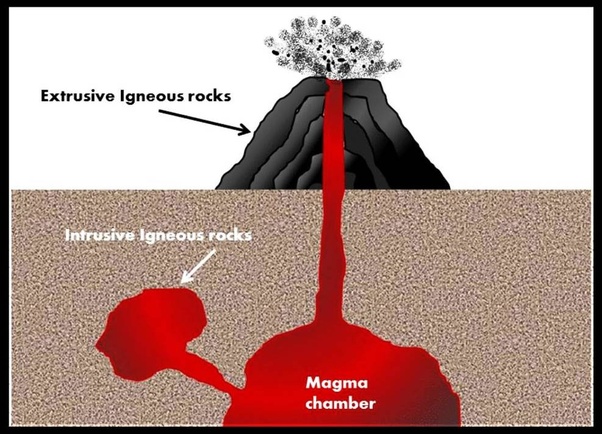Sedimentary rocks are formed from broken down bits of other rocks or even from the remains
of plants or animals. The little pieces collect in low-lying areas by lakes, oceans, and deserts.
They are then pressed into rock by the weight of the materials around them and on top of them.

of plants or animals. The little pieces collect in low-lying areas by lakes, oceans, and deserts.
They are then pressed into rock by the weight of the materials around them and on top of them.
Metamorphic Rocks
Metamorphic rocks are formed when sedimentary or igneous rocks are affected by great
temperatures and pressures. They do not melt, but the chemicals they contain may change
their crystal shapes. The name metamorphic comes from Greek words meaning “change
of shape.”If there is a serious amount of pressure or heat, these stones undergo
metamorphosis, harden and create new crystals! This happens over time, and isn’t instant.
That’s pretty interesting.
temperatures and pressures. They do not melt, but the chemicals they contain may change
their crystal shapes. The name metamorphic comes from Greek words meaning “change
of shape.”If there is a serious amount of pressure or heat, these stones undergo
metamorphosis, harden and create new crystals! This happens over time, and isn’t instant.
That’s pretty interesting.
Examples of metamorphic rocks include anthracite, quartzite, marble, slate, granulite,
gneiss and schist.
gneiss and schist.
Igneous Rocks
Igneous rocks are rocks that have formed by the cooling and hardening of molten lava or
Igneous rocks are rocks that have formed by the cooling and hardening of molten lava or
magma. When magma comes out onto the surface of the Earth, it is called lava.
Lava cools down to form rocks such as tuff and basalt (extrusive rocks).
Also, the magma may slowly cool down to form rocks under the surface (intrusive rocks).
An example is granite.
Lava cools down to form rocks such as tuff and basalt (extrusive rocks).
Also, the magma may slowly cool down to form rocks under the surface (intrusive rocks).
An example is granite.
Igneous rock is formed in two ways.
- Igneous rock formed from lava that has become solid on the outside of the Earth is called extrusive igneous rock. This can happen because of the eruption of a volcano. Extrusive igneous rock cools quickly. Some extrusive igneous rock types are basalt, andesite, rhyolite, tuff, obsidian, and pumice.
Volcanos
There are three main types of volcano in New Zealand:
- cone volcanoes (like Mt Taranaki)
- caldera volcanoes (like Taupo)
- volcanic fields (like Rangitoto)
Here is a link to the GNS website with more information.
Earth's Crust
















